**
- Cleveland* * QB Sam Darnold, USC**
His apparent willingness to go to the Browns and his experience in a scheme with pro-style traits ensures that if his name isn't called first, he won't wait long.
2. N.Y. Giants
QB Josh Rosen, UCLA
New general manager Dave Gettleman knows the value of building around a franchise quarterback, having assembled a conference-winning team in Carolina around Cam Newton, whom he inherited. While Eli Manning is still a solid starter, the opportunity to find the Giants' next long-term answer could be too tempting to resist.
3. Indianapolis
Edge rusher Bradley Chubb, N.C. State
The Colts never adequately replaced the retired Robert Mathis and have a crying need for pass-rush help.
4. Cleveland (from Houston)
RB Saquon Barkley, Penn State
Barkley gives the Browns a chance for a transformative draft, as he could become one of the league's elite runners right away behind their stout offensive line.
**
- Denver* * QB Baker Mayfield, Oklahoma**
If the Broncos opt to find their long-term quarterback answer in free agency, they will almost certainly look elsewhere with their first-round pick. But the potential price tag of the prime veteran options could chew up much of their potential salary-cap space. Mayfield's combination of on-field savvy, leadership, swagger and accuracy make him a first-rounder, with the potential to go as early as the first five selections.
6. N.Y. Jets
OT Connor Williams, Texas
He should be back to 100 percent in time for offseason work after injuring two knee ligaments last season -- although he eventually returned to the lineup. Quick feet separate Williams from other first-round caliber tackles.
7. Tampa Bay
DB Minkah Fitzpatrick, Alabama
Whether he is a safety or a cornerback depends on the formation and down and distance, but in either role, he would help the Buccaneers' battered defense.
8. Chicago
WR Courtland Sutton, SMU
Alabama's Calvin Ridley is another possibility here, but Sutton might have the higher ceiling of the two.
**
PICKS 9 AND 10, ORDER TO BE DETERMINED BY COIN FLIP**
San Francisco
9 or 10. Quenton Nelson, Notre Dame
Nelson is likely to be the first top-10 guard since 2013, and he could be the best offensive lineman on the board.
Oakland
9 or 10. LB Roquan Smith, Georgia
There is no player quite like Smith in the draft, combining pass-rush punch, coverage ability and aggressive play against the run.
11. Miami
DE Arden Key, LSU
Cameron Wake is still productive, but he turns 36 later this month, and the Dolphins need to add depth and a complement on the edge.
12. Cincinnati
OT Orlando Brown, Oklahoma
The Bengals' offensive line sagged last year in the wake of the free-agency departures of Kevin Zeitler and Andrew Whitworth, making Brown a clear target.
13. Washington
QB Josh Allen, Wyoming
If Washington keeps Kirk Cousins, they'll look elsewhere, but if Cousins departs, they will need to find a long-term quarterbacking answer, with Colt McCoy likely to be a bridge starter.
**
- Green Bay* * OLB Harold Landry, Boston College**
He's versatile enough to drop back into coverage and pursue ballcarriers all over the field, but his primary task will be to rush the passer, something he did well before a season-ending ankle injury last year.
15. Arizona
OT Mike McGlinchey, Notre Dame
Quarterback is a strong possibility for the Cardinals if they don't address the position in free agency. If they want to go the draft route for a QB, they might have to move up to get the passer they want.
16. Baltimore
WR Calvin Ridley, Alabama
If at first you don't succeed ... the Ravens make another try at finding a No. 1 receiver to succeed the now-retired Steve Smith Sr.
17. L.A. Chargers
LB Tremaine Edmunds, Virginia Tech
Edmunds would provide a perfect complement to edge rusher Melvin Ingram and defensive end Joey Bosa.
18. Seattle
RB Derrius Guice, LSU
Running-back-by-committee didn't work for the Seahawks last year, and while offensive line is a possibility here, a workhorse back to take the pressure off Russell Wilson is also a necessity.
19. Dallas
DT Vita Vea, Washington
The 346-pound Vea can provide push in the pass rush, making him a viable every-down player. But it is dominant play against the run that will get him into the first round, and that is exactly what the Cowboys need after finishing 27th in first-down rate against the run, allowing one first down every 4.2 attempts.
20. Detroit
S Derwin James, Florida State
If James falls this far, he will be hard to pass up.
21. Buffalo
WR Christian Kirk, Texas A&M
Acquiring Kelvin Benjamin at midseason helped, but the Bills still need more targets.
**
- Buffalo (from Kansas City)* * QB Mason Rudolph, Oklahoma State**
A sprained foot will keep Rudolph out of the Senior Bowl, robbing him of the chance to show that he can run a pro-style offense, but he is still expected to participate in the team-interview portion of the week's work.
23. L.A. Rams
CB Josh Jackson, Iowa
Trumaine Johnson is a free agent and Kayvon Webster is recovering from an Achilles injury. For the Rams to play the type of defensive football they want, they need outstanding cornerback play.
24. Carolina
Edge rusher Marcus Davenport, Texas-San Antonio
Few players have more to gain next week at the Senior Bowl than Davenport, who could vault himself into the top 10 with an outstanding performance for the South team.
25. Tennessee
CB Denzel Ward, Ohio State
The Titans' secondary saw marked improvement in 2017, but it still needs another reinforcement to take the next step.
26. Atlanta
DT Da'Ron Payne, Alabama
Dontari Poe wasn't his dominant Kansas City self in his season with the Falcons, who need to get younger and more athletic on the interior of their defensive line.
27. New Orleans
S Justin Reid, Stanford
The Saints' improving defense could still use more reinforcements, although wide receiver is also a possibility here.
28. Pittsburgh
QB Lamar Jackson, Louisville
Even if Ben Roethlisberger returns for a 15th season, the Steelers still need to find a successor. Jackson, who needs some refinement to become more of a pass-first quarterback, fits the bill.
**
PICKS 29-32, ORDER TO BE DETERMINED BY PLAYOFF RESULTS**
Jacksonville
WR Anthony Miller, Memphis
The Jaguars could also look to tight ends, especially if Oklahoma's Mark Andrews and South Carolina's Hayden Hurst are on the board. South Dakota State's Dallas Goedert is another possibility if he has a strong Senior Bowl week.
Philadelphia
OT Brian O'Neill, Pittsburgh
Probably the best offensive tackle at the Senior Bowl, and a potential necessity for the Eagles going forward.
Minnesota
C/G Billy Price, Ohio State
Last year's Rimington Trophy winner should be an immediate starter.
New England
DT Maurice Hurst, Michigan
Hurst could end up going higher, but if he falls this far, the Patriots will jump at the chance to add the son of one of their 1990s standouts.
Andrew Mason offers his evaluations of 11 key players from the first two days of East-West Shrine Game practice. (Photos: Andrew Mason)

Northern Iowa wide receiver Daurice Fountain has the longest arms of any wide receiver in the East-West Shrine Game (34.5 inches), but it's the long stride and acceleration of the 6-foot-2, 210-pounder that stands out. During Tuesday's practice, Fountain showed the ability to reach top speed in a hurry, allowing him to rack up yardage after the catch on screen and swing passes.

South Florida running back D'Ernest Johnson has posted two consecutive solid days of practice to open the week. The 5-foot-11, 204-pounder showed decisiveness in his cuts, allowing him to burst upfield for some solid gains. He also caught several passes out of the backfield that he was able to turn into double-digit pickups.
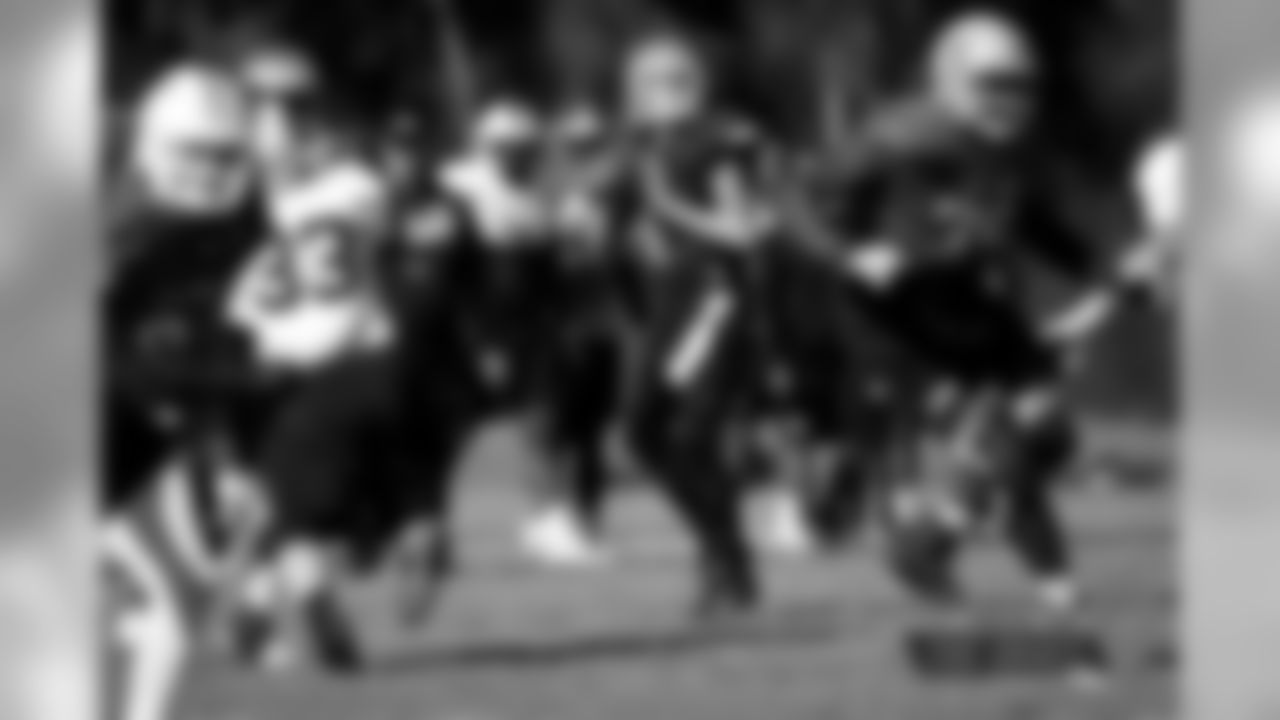
Memphis quarterback Riley Ferguson looked smooth Tuesday working under center, showing marked progress compared to his work Monday, when he struggled with his timing on plays that were not run from the shotgun. Ferguson appears to have the best raw arm talent of the six quarterbacks on hand this week.

North Carolina State DT Kentavius Street was consistently in the backfield during Tuesday's East team practice, using a variety of moves to disrupt run and pass plays with equal effectiveness. Street delivered in one-on-one drills Tuesday, which allowed him to successfully build off a strong Monday practice in which he knocked down a pass at the line of scrimmage.
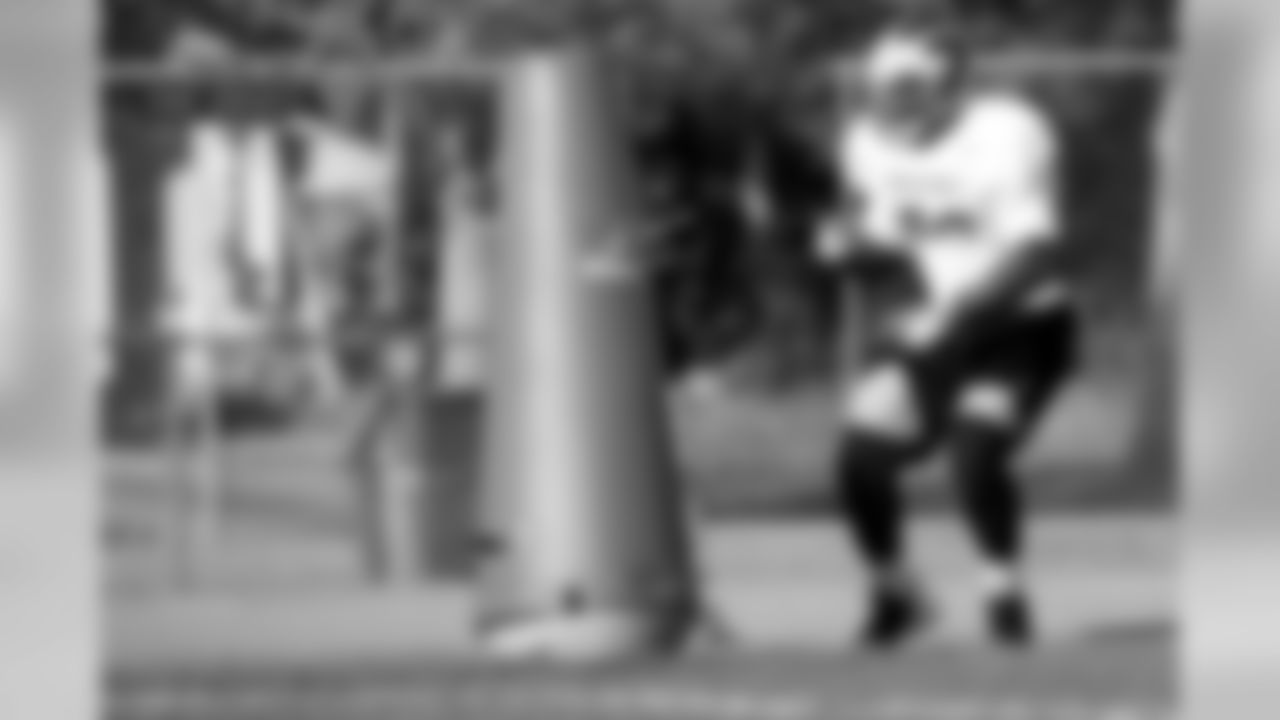
Delaware defensive tackle Bilal Nichols was consistently disruptive during the team period of Tuesday's practice, building off a solid Monday in which he was able to defuse some of runs from the inside.

Nebraska cornerback Joshua Kalu showed good speed in staying step-for-step with UNLV WR Devonte Boyd during a one-on-one repetition Monday, allowing Boyd to get no separation up the right sideline. Kalu then capitalized off a throw that was short of Boyd, adjusting to the football in mid-air to win the jump ball with Boyd and finish with an interception. Kalu also tried to give himself an extra challenge by catching passes one-handed during a drill in practice Tuesday.
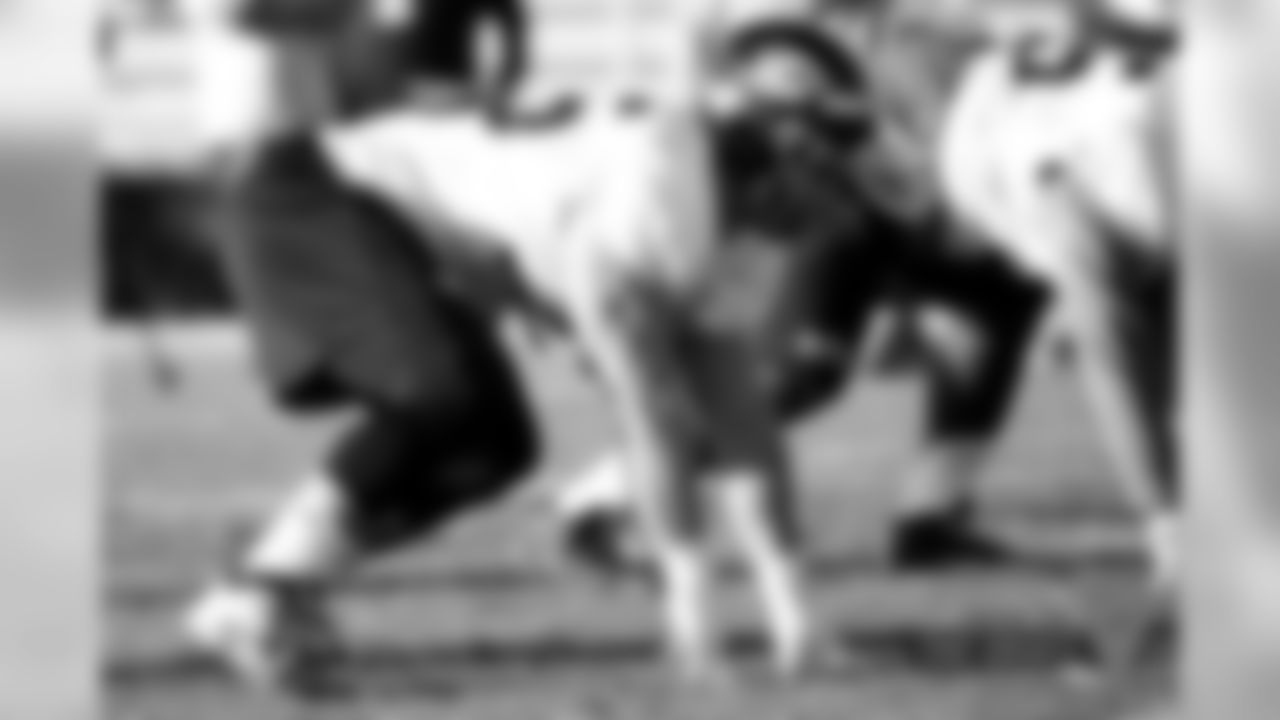
Edge rusher could be the strongest group here, and Central Michigan's Joe Ostman opened the week with two consecutive strong days that saw him consistently disrupt all of the West team's quarterbacks. The 6-foot-2, 248-pounder's strong play off the edge is no surprise; he had 14 sacks in just 10 games last season.
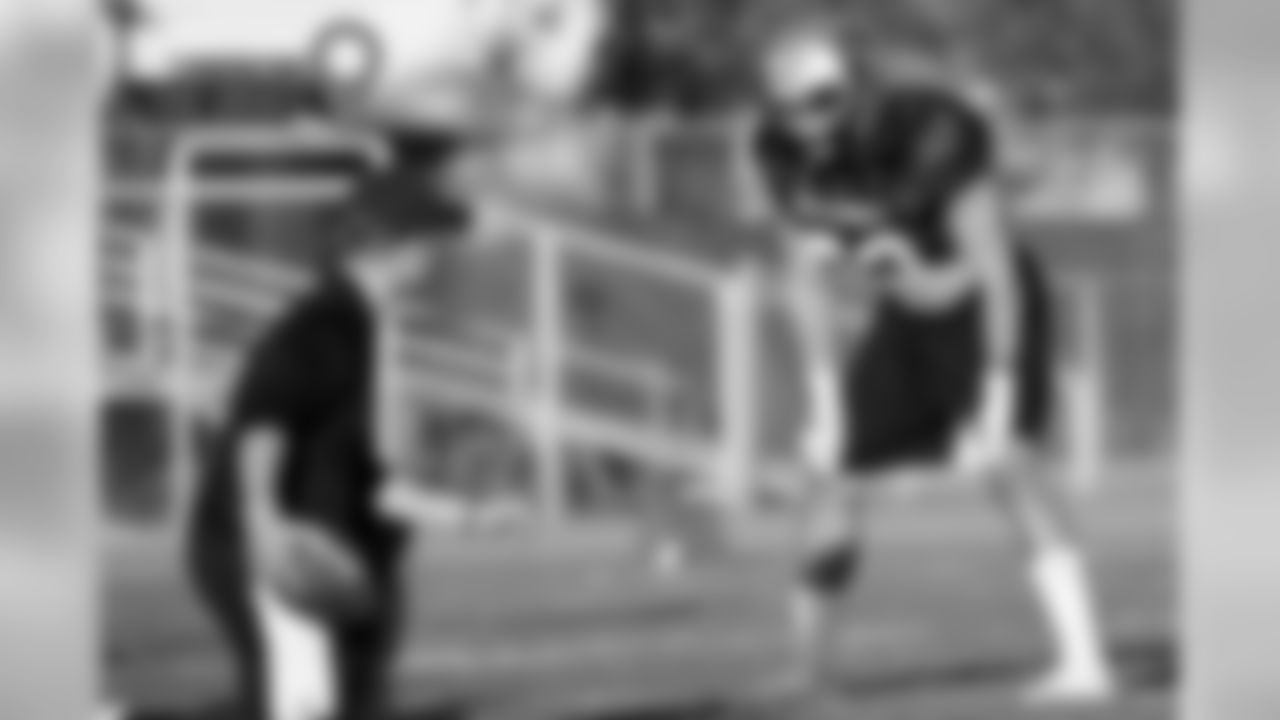
Colorado running back Phillip Lindsay delivered perhaps the best run of the day Tuesday in a nine-on-seven period, scampering through a hole to the left side for a long gain. Lindsay measured at 5-foot-7-3/8 and 185 pounds on Monday, and while he doesn't appear to project as an every-down back, he could flourish as a situational back. Lindsay also fielded punt returns during Monday's practice.
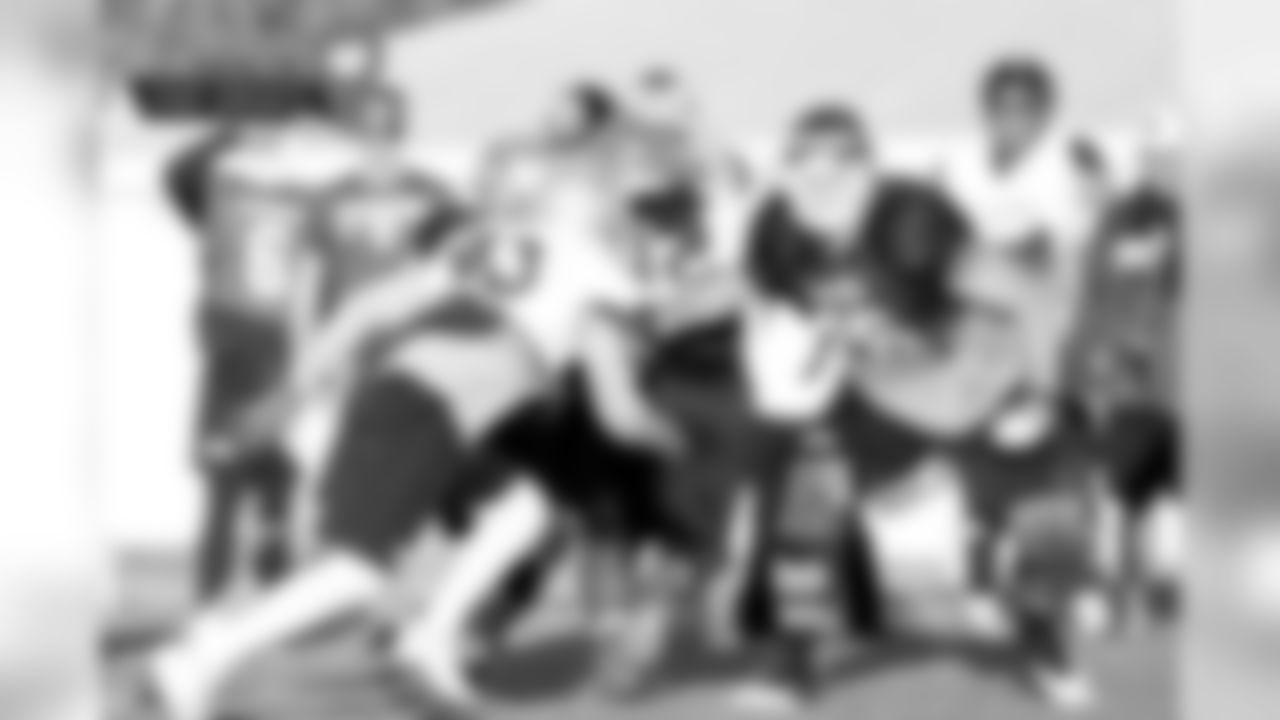
Washington State guard Cody O'Connell is the heaviest player at the East-West Shrine Game, checking in at 365 pounds, but the 6-foot-8-1/2-inch offensive lineman carries it well and showed solid fluidity and agility during West team line drills Tuesday.
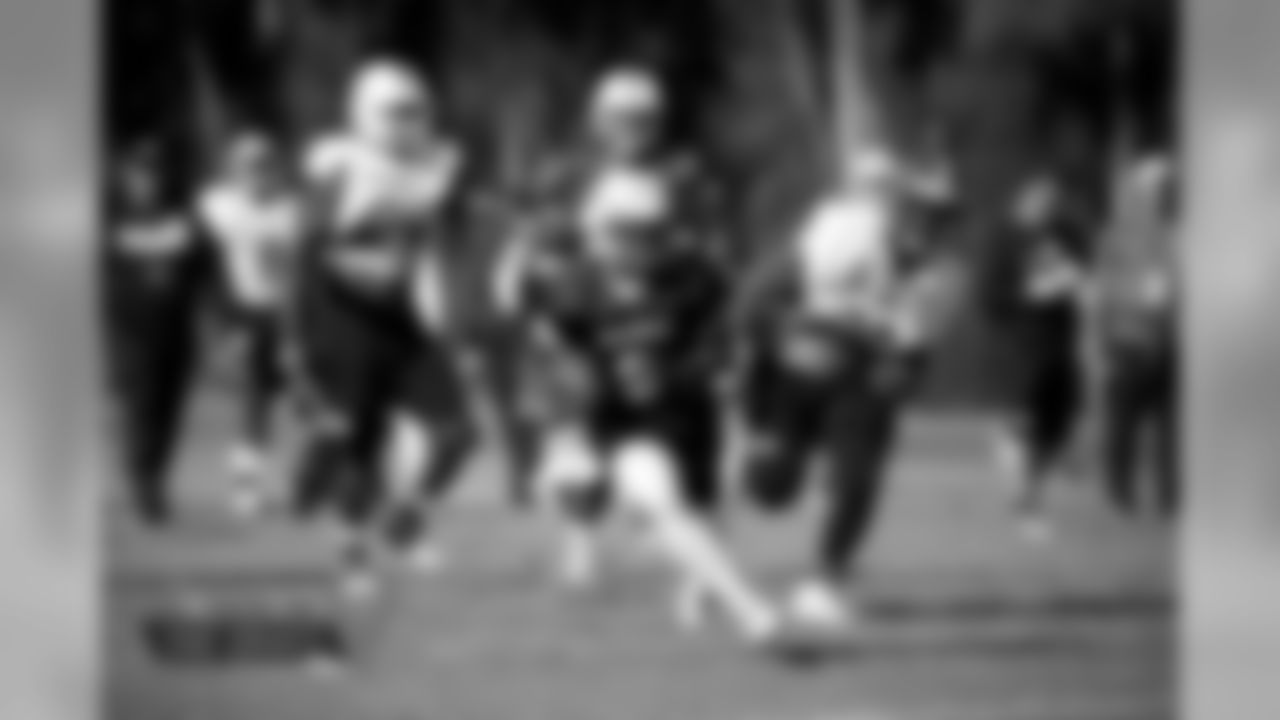
USF QB Quinton Flowers has perhaps the biggest adjustment. At 5-foot-10 1/4, he is the shortest quarterback at the Shrine Game, and in college he was a prototypical dual-threat quarterback, posting back-to-back 1,000-yard rushing seasons. On multiple occasions Monday, he tucked the ball away and scrambled instead of waiting for the opportunity to pass. Flowers also will have to do more work under center; he said he plans to continue taking extra snaps from under center over the next few months to prepare himself. He also showed additional versatility by fielding punts during Tuesday's practice.
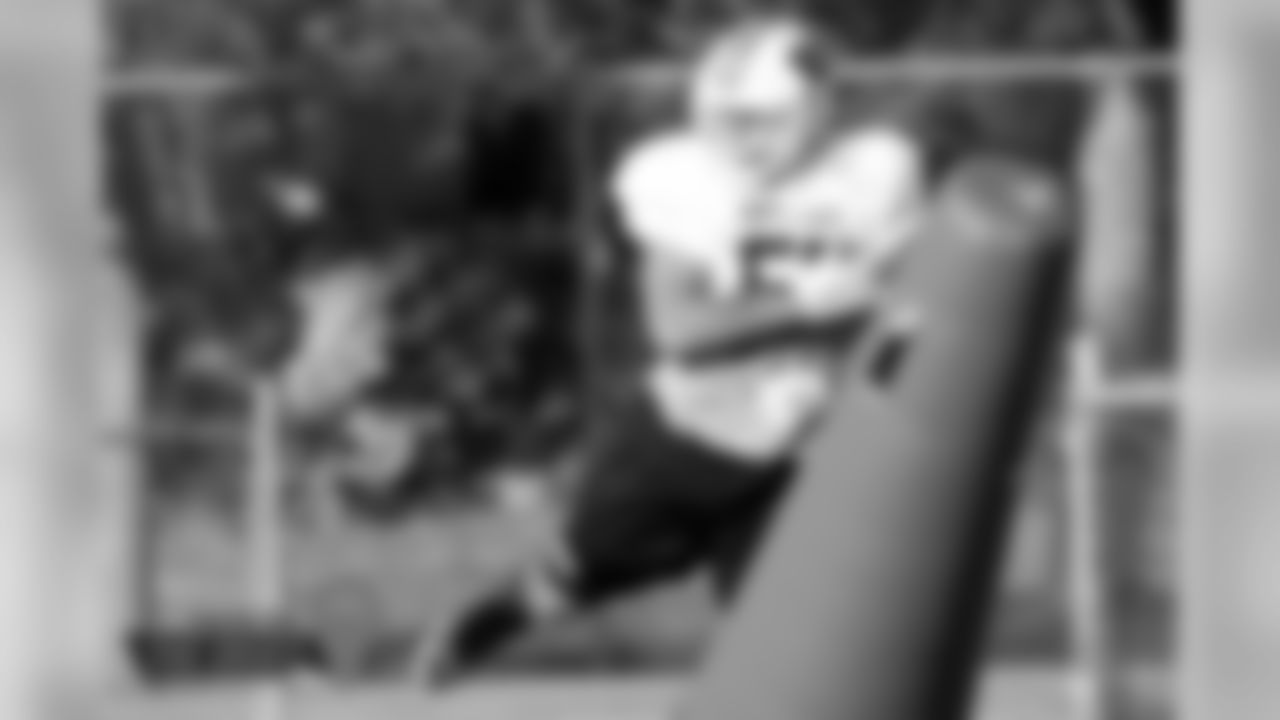
Wisconsin's Alec James also had a disruptive day for the West team in Tuesday's practice, blowing up a handful of runs while also bursting off the edge for pressures that would have been sacks in game conditions. At 6-foot-3 and 270 pounds, James is strong at the point of attack and explosive for his size.
Andrew Mason offers his evaluations of eight key players from the final two days of East-West Shrine Game practice. (Photos: Andrew Mason)

Senat is much lighter on his feet and more agile than you would expect a 322-pounder to be. During Wednesday's practice, he won most of his pass-rush drills, adding an effective spin move to the bull rush that he has the strength to utilize. Senat's play against the run forced the East offensive line to make him the focus of double-teams, but he was still able to disrupt plays, either by forcing his way into the backfield or continuing to move laterally, allowing other front-seven players to make stops.
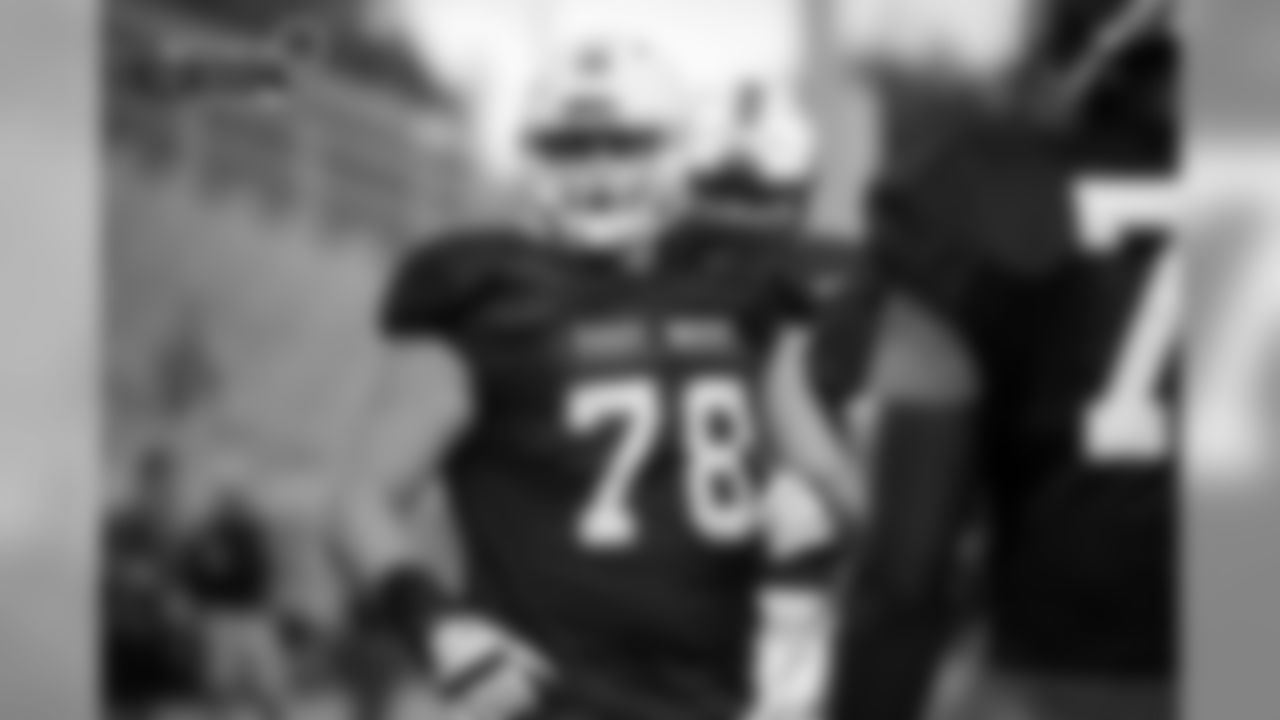
Most years, some East-West Shrine Game standouts get the call to take part in the Senior Bowl the following week through late invitations. This year, Toth is the first player to get that call. The 6-foot-6 inch tackle was one of the best run blockers in college football -- which made him particularly effective for the ground-intensive Black Knights. Toth added 85 pounds of mass over the last four years, transforming himself into an effective player -- and Army's first Senior Bowl selection.
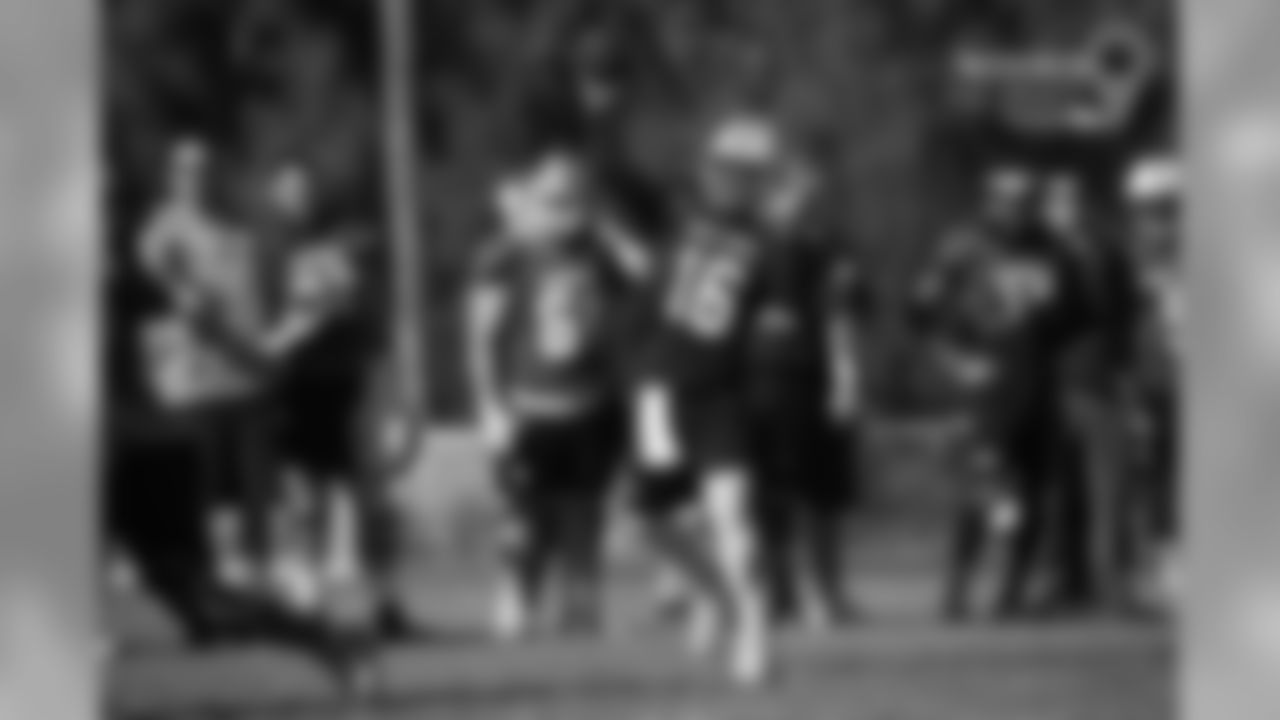
Barrett's combination of overall productivity and experience in high-leverage games and situations gives him a good chance of being drafted, even though his overall arm strength does not match that of some other quarterbacks in this year's draft class. At times, Barrett seemed to want to show teams that he would pass rather than run, and he occasionally bypassed wide-open running lanes upfield to get the ball out to his running backs and tight ends. This will serve him well in the long term, but as he begins developing as a pro, he will continue to need to rely on his mobility.
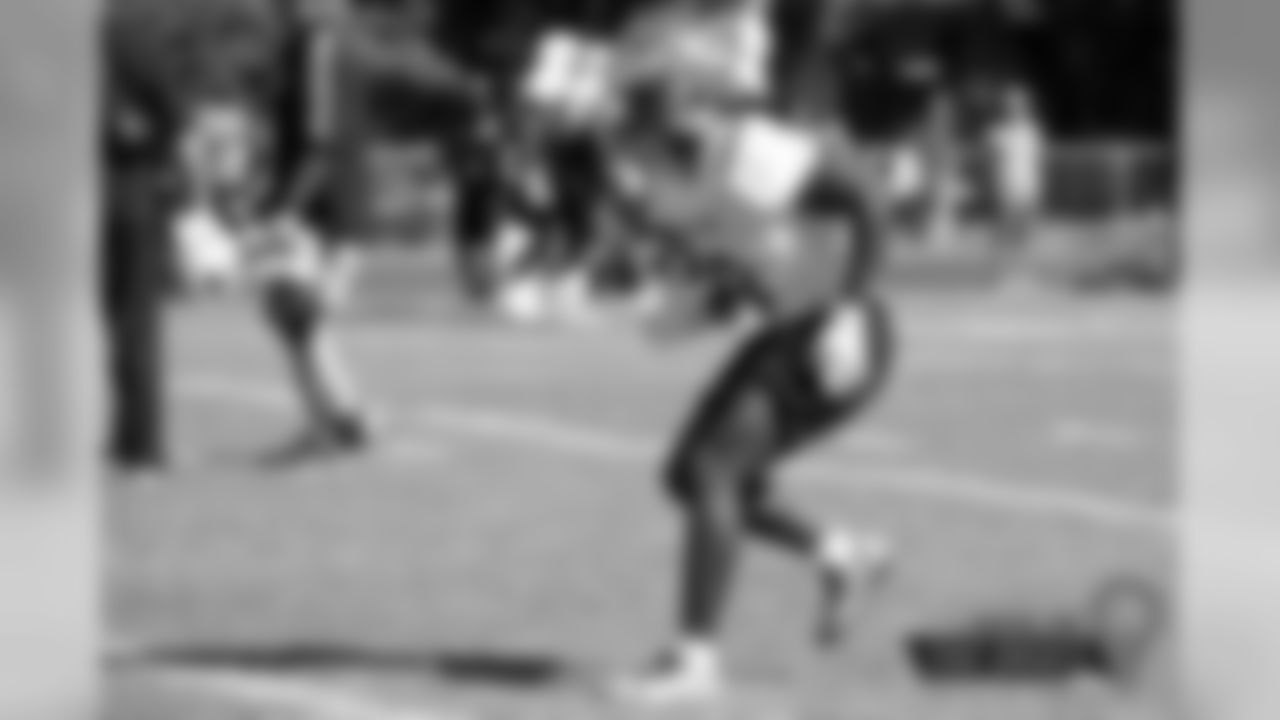
Nothing about the measurables jumps out for Nichols, a 5-foot-9, 186-pound cornerback with the shortest arms of any player at the East-West Shrine Game (29 1/4 inches). But his tenacity, aggressiveness and willingness to attack opposing receivers at the line of scrimmage made him the "plays bigger than he stands" defensive back of this week's proceedings. His one-on-one duels with Northern Iowa wide receiver Daurice Fountain were among the most spirited of the week. Nichols has a chance to develop into a solid slot cornerback.

When the 6-foot-6, 275-pounder is on, he is one of the most difficult players to block in this year's class. He does a good job using his 34 1/8-inch arms to maximum effectiveness working against opposing tackles; his length allows him to keep his distance while his strength gives him the ability to still use the tackle as leverage when he has proper hand placement. Consistency is the biggest knock on Thomas at this point, but if his potential can be harnessed, he could be effective as a defensive end in either 4-3 or 3-4 schemes.

The 6-foot-1, 245-pound West team linebacker was able to make his college production translate to another level this week, frequently winning his one-on-one matchups with a variety of moves. Rolland-Jones' versatility could also project well to a special-teams role if he doesn't work his way into a defensive rotation during his rookie season.

Mizzou's reputation for producing draft-worthy pass rushers looks set to continue with Frazier, who consistently dominated in drills and team periods throughout the week. The 6-foot-4, 261-pound Frazier was also effective against the run, holding his ground at the point of attack.
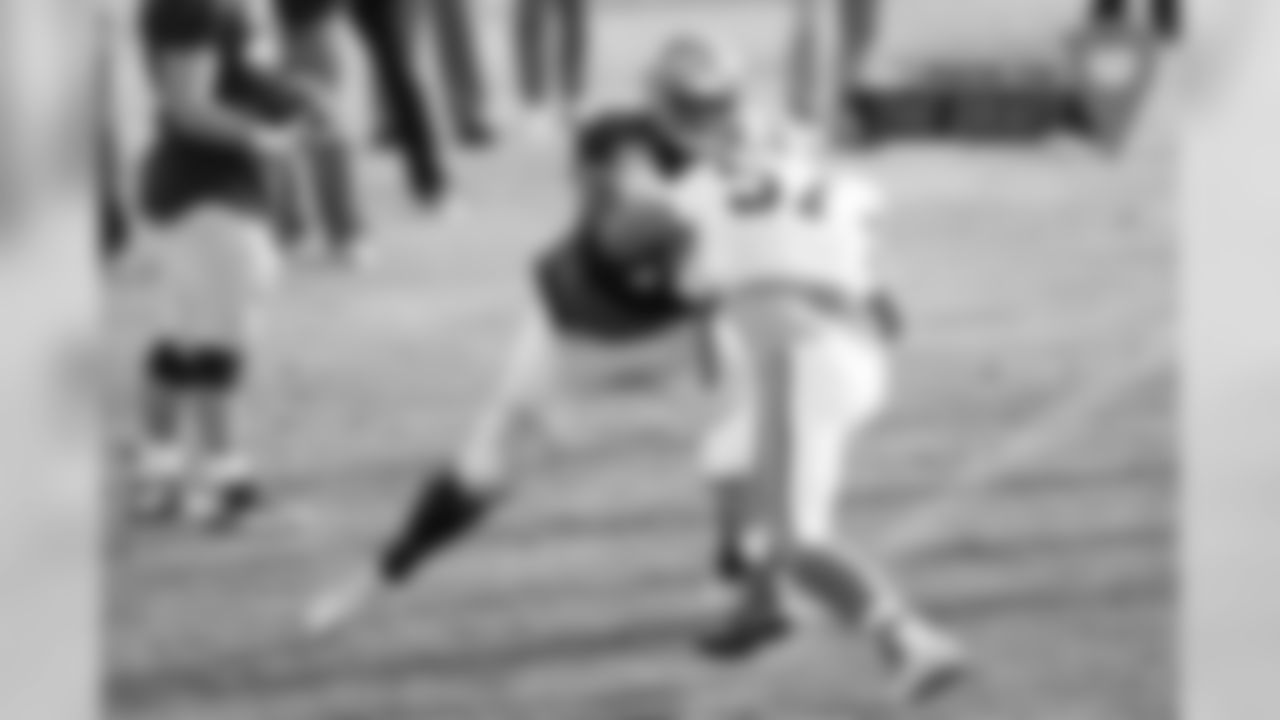
With players like Senat who arrive at all-star games from FCS, Division II or Division III, you want to find out if their measurables, athleticism and dominance at their levels will translate to a higher caliber of competition. Senat's quickness stood out -- which is what you expect for an offensive tackle who carries 294 pounds on his 6-foot-6 frame. He will likely need to get up to or above 300 pounds, but as the game continues to evolve and incorporate more spread concepts that play into the hands of lithe, athletic tackles, Senat could be well-positioned for eventual success if a team gives him enough time to develop.














